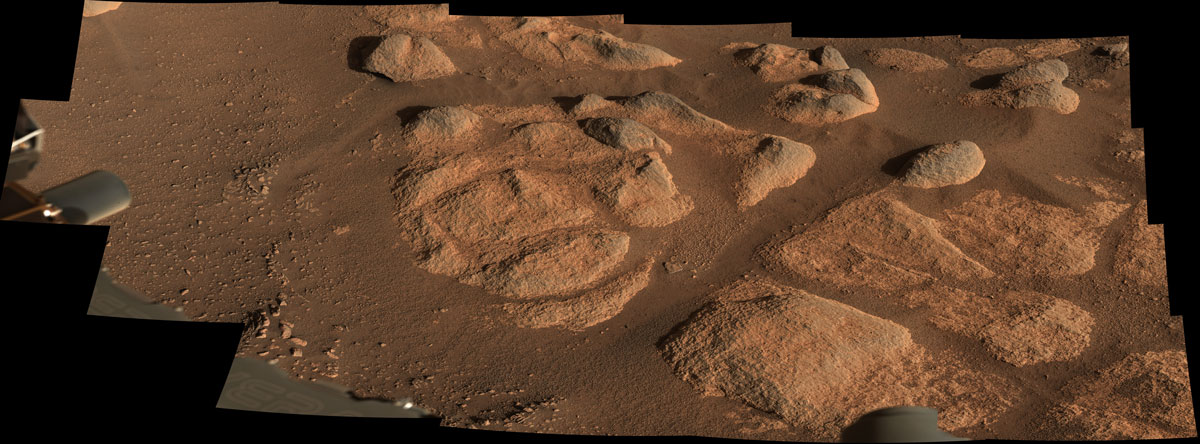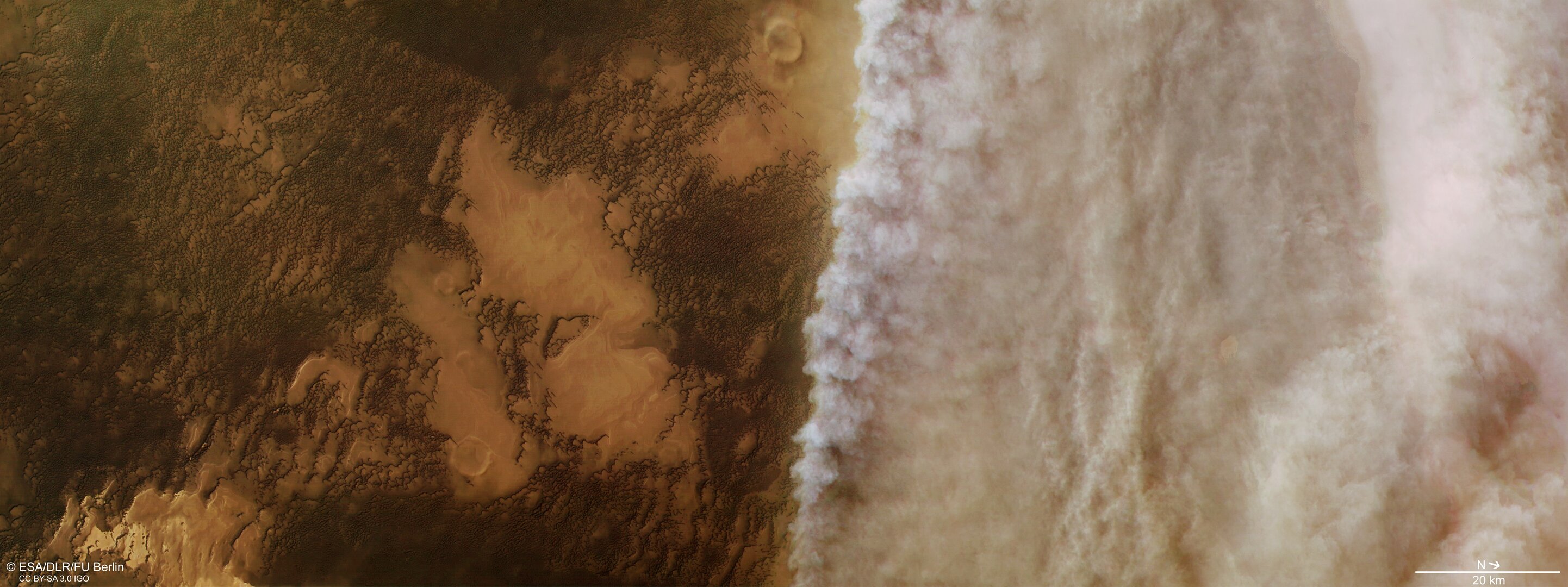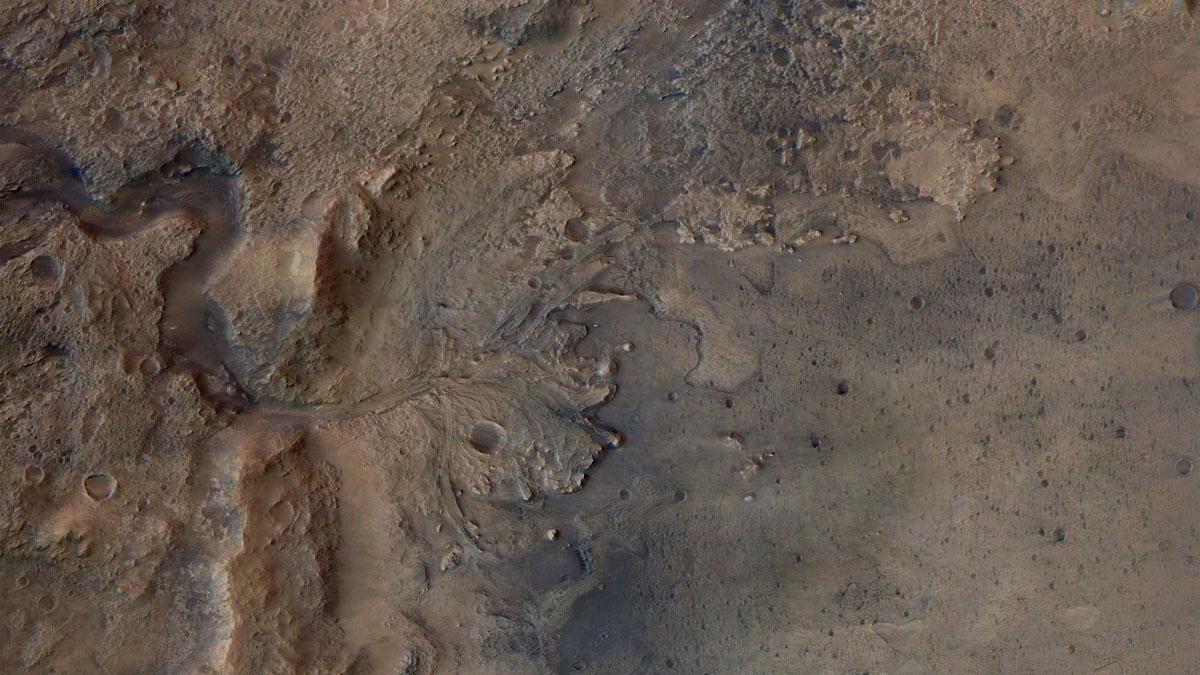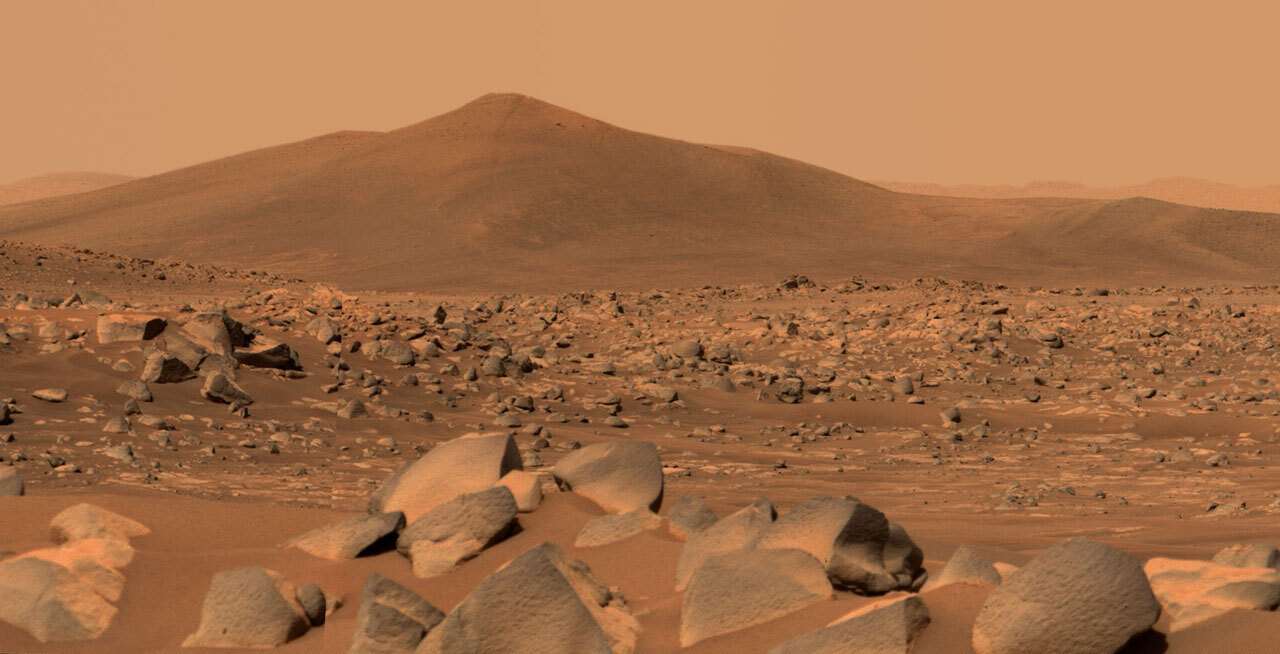It looks like you're using an Ad Blocker.
Please white-list or disable AboveTopSecret.com in your ad-blocking tool.
Thank you.
Some features of ATS will be disabled while you continue to use an ad-blocker.
share:
Percy has finished playing with its helicopter and now it's time to start doing some science , Ingenuity helicopter is now a part of the team so Percy
can continue with its mission and use Ingenuity as a scout.
Percy has also found some "Intriguing Rocks" although NASA don't say why they are Intriguing and I'm not a geologist , but they're Intriguing to NASA so there is that.

mars.nasa.gov...
With China's TIANWEN-1 rover due to land (or crash) in July the race is on to find the Martians.
The time has come: I’m switching from on-scene photographer to science investigator. Did this ancient lakebed ever have life? The tools I brought will help begin the hunt. I’m a bot on a mission.
twitter.com...
Mastcam-Z Views 'Santa Cruz' on Mars: NASA’s Perseverance Mars rover used its dual-camera Mastcam-Z imager to capture this image of “Santa Cruz,” a hill about 1.5 miles (2.5 kilometers) away from the rover, on April 29, 2021, the 68th Martian day, or sol, of the mission. The entire scene is inside of Mars’ Jezero Crater; the crater’s rim can be seen on the horizon line beyond the hill. Credit: NASA/JPL-Caltech/ASU/MSSS
Percy has also found some "Intriguing Rocks" although NASA don't say why they are Intriguing and I'm not a geologist , but they're Intriguing to NASA so there is that.

mars.nasa.gov...
With China's TIANWEN-1 rover due to land (or crash) in July the race is on to find the Martians.
edit on 11-5-2021 by gortex because: edit to add link
The intriguing rocks... I don't know what the scale is, but that one looks like a bone.
Not saying it is a bone, but it is shaped like a bone.
Just right of center, a third of the way down.
Not saying it is a bone, but it is shaped like a bone.
Just right of center, a third of the way down.
edit on b000000312021-05-11T13:51:31-05:0001America/ChicagoTue, 11 May 2021 13:51:31
-0500100000021 by butcherguy because: (no reason given)
originally posted by: gortex
mars.nasa.gov...
The article says that the above picture you posted is only ten feet across. So while there does look to be a bone in the upper right hand corner, I would think that the interesting part of this photo is that it appears to have been made by flowing water (or liquid).
Personally as much as I would like that one rock to be a bone, I really doubt that a bone would have survived this long sticking out like that in the Martian atmosphere. Would be neat though.
a reply to: Guyfriday
I agree....
So I won't mention the face in the middle of the pic.
Personally as much as I would like that one rock to be a bone, I really doubt that a bone would have survived this long sticking out like that in the Martian atmosphere. Would be neat though.
I agree....
So I won't mention the face in the middle of the pic.
a reply to: Guyfriday
I thought about water erosion, too. However, I'm more inclined to think it was sculpted by heat, perhaps a lava flow. Could the hill nearby be a remnant of an extinct volcano? Is there any evidence of past volcanic activity on Mars?
From Gortex's link, here is what they say about the scale of the various rocks, encompassed in the 10 foot area you mentioned.
I thought about water erosion, too. However, I'm more inclined to think it was sculpted by heat, perhaps a lava flow. Could the hill nearby be a remnant of an extinct volcano? Is there any evidence of past volcanic activity on Mars?
From Gortex's link, here is what they say about the scale of the various rocks, encompassed in the 10 foot area you mentioned.
For scale, the largest piece of rock casting a shadow in the upper right part of the mosaic is about 11 inches (27 centimeters) across, and the entire scene is about 10 feet (3 meters) across. The smallest pebbles and other features that can reliably be resolved at this zoom scale are around 0.04 to 0.08 inches (1-2 millimeters) across.
Could be wind erosion? And why is Andy Rooney on mars ? The first picture is the apotheosis of a post apocalyptic landscape.
edit on 11-5-2021
by bluemooone2 because: (no reason given)
I agree....
So I won't mention the face in the middle of the pic.
CowaBunga Dude!!
So I won't mention the face in the middle of the pic.
CowaBunga Dude!!
a reply to: Guyfriday
What atmosphere? Mars' atmosphere is less than one percent the density of Earth's.
But yeah I agree with you, it looks like liquid eroded those rocks.
doubt that a bone would have survived this long sticking out like that in the Martian atmosphere.
What atmosphere? Mars' atmosphere is less than one percent the density of Earth's.
But yeah I agree with you, it looks like liquid eroded those rocks.
a reply to: Alien Abduct
Yet we can fly a helicopter there so significant enough , wind erosion does take its toll over years.
What atmosphere? Mars' atmosphere is less than one percent the density of Earth's.
Yet we can fly a helicopter there so significant enough , wind erosion does take its toll over years.
Lots of stuff looks like other stuff. I've looked at Mars rocks literally for years now. These are pretty common.
But how long has Perseverance been there now with nothing to show for it other than some (not very) odd rocks and a little flying toy? I've always said that if you dropped a probe on Earth anywhere but an active volcano you would probably find either life or traces of it in 15 minutes. Life is pernicious and if it pops up anywhere, pretty soon it's everywhere. The fact that it hasn't already found it is telling.
But how long has Perseverance been there now with nothing to show for it other than some (not very) odd rocks and a little flying toy? I've always said that if you dropped a probe on Earth anywhere but an active volcano you would probably find either life or traces of it in 15 minutes. Life is pernicious and if it pops up anywhere, pretty soon it's everywhere. The fact that it hasn't already found it is telling.
originally posted by: gortex
a reply to: Alien Abduct
What atmosphere? Mars' atmosphere is less than one percent the density of Earth's.
Yet we can fly a helicopter there so significant enough , wind erosion does take its toll over years.
It's more likely that it was water that eroded those rocks before the lake evaporated. If it were the atmosphere the other rocks around them would have the same erosion. This is probably how they can tell its a dry lake bed. Perfect place to look for ancient fossils.
a reply to: Encia22
In answer to my own question about volcanic activity, this article popped up in my news feed.
www.syfy.com...
In answer to my own question about volcanic activity, this article popped up in my news feed.
www.syfy.com...
The surface of Mars is littered with volcanic material globally, but volcanism peaked on the planet probably 2–3 billion years ago. However, there has been some evidence that activity continued into geologically recent times; some features have been dated to be as young as 2 million years.
originally posted by: Encia22
a reply to: Encia22
In answer to my own question about volcanic activity, this article popped up in my news feed.
www.syfy.com...
The surface of Mars is littered with volcanic material globally, but volcanism peaked on the planet probably 2–3 billion years ago. However, there has been some evidence that activity continued into geologically recent times; some features have been dated to be as young as 2 million years.
I should read up on just how these folks are managing to date Mars rocks. Seems to me like it would be pretty difficult, since very few of the same geological forces are at work on Mars that we have here on Earth. This is particularly true since the landscape seems pretty churned up. If it really settled down billions of years ago, the only thing that I can think of that would toss boulders around like we see is massive periodic meteorite impacts. With some of them happening not too long ago, geologically speaking.
originally posted by: Alien Abduct
a reply to: Guyfriday
doubt that a bone would have survived this long sticking out like that in the Martian atmosphere.
What atmosphere? Mars' atmosphere is less than one percent the density of Earth's.
But yeah I agree with you, it looks like liquid eroded those rocks.
There is enough atmosphere to suspend dust in it during the not-uncommon dust-storms Mars is known to have. The particles being suspended in the Martian air are finer than sand, but there is still enough atmosphere to do it.

Image Source and Description
Water erosion is/was a thing on mars, but so is aerobic (wind) erosion. The rippled dunes on Mars are evidence of the wind-driven dust and sand that has been eroded from rocks.
Mars' thin atmosphere is also enough for localized dust devils to form, like seen by the Curiosity Rover:
edit on 2021/5/14 by Box of Rain because: (no reason given)
originally posted by: LSU2018
a reply to: gortex
Thanks for the thread, S&F
How did NASA determine that the first picture was a dried up lake and not simply a crater left by an asteroid?
If I'm understanding this correctly, the crater is in the dry lake bed:

mars.nasa.gov...
a reply to: Box of Rain
Of course the very thin (0.4% earth's) atmosphere causes a very slow and mild erosion. However the rocks in question in the OP are rocks at the bottom of a dry lake bed. They look much much more warn than the surrounding rocks. This is because they were once being eroded by liquid water which erodes rocks thousands of times faster than Mars' atmosphere.
The rover was purposefully landed near the ancient dry lake bed because it's an obvious place to look for fossils or perhaps life under the surface.
The rippled dunes on Mars are evidence of the wind-driven dust and sand that has been eroded from rocks.
Of course the very thin (0.4% earth's) atmosphere causes a very slow and mild erosion. However the rocks in question in the OP are rocks at the bottom of a dry lake bed. They look much much more warn than the surrounding rocks. This is because they were once being eroded by liquid water which erodes rocks thousands of times faster than Mars' atmosphere.
The rover was purposefully landed near the ancient dry lake bed because it's an obvious place to look for fossils or perhaps life under the surface.
new topics
-
Any one suspicious of fever promotions events, major investor Goldman Sachs card only.
The Gray Area: 1 hours ago -
God's Righteousness is Greater than Our Wrath
Religion, Faith, And Theology: 5 hours ago -
Electrical tricks for saving money
Education and Media: 9 hours ago -
VP's Secret Service agent brawls with other agents at Andrews
Mainstream News: 10 hours ago -
Sunak spinning the sickness figures
Other Current Events: 11 hours ago -
Nearly 70% Of Americans Want Talks To End War In Ukraine
Political Issues: 11 hours ago
top topics
-
VP's Secret Service agent brawls with other agents at Andrews
Mainstream News: 10 hours ago, 9 flags -
Cats Used as Live Bait to Train Ferocious Pitbulls in Illegal NYC Dogfighting
Social Issues and Civil Unrest: 14 hours ago, 8 flags -
Electrical tricks for saving money
Education and Media: 9 hours ago, 4 flags -
Nearly 70% Of Americans Want Talks To End War In Ukraine
Political Issues: 11 hours ago, 3 flags -
Sunak spinning the sickness figures
Other Current Events: 11 hours ago, 3 flags -
Late Night with the Devil - a really good unusual modern horror film.
Movies: 13 hours ago, 2 flags -
Any one suspicious of fever promotions events, major investor Goldman Sachs card only.
The Gray Area: 1 hours ago, 2 flags -
The Good News According to Jesus - Episode 1
Religion, Faith, And Theology: 16 hours ago, 1 flags -
God's Righteousness is Greater than Our Wrath
Religion, Faith, And Theology: 5 hours ago, 0 flags
active topics
-
God's Righteousness is Greater than Our Wrath
Religion, Faith, And Theology • 11 • : andy06shake -
SETI chief says US has no evidence for alien technology. 'And we never have'
Aliens and UFOs • 60 • : Scratchpost -
Election Year 2024 - Interesting Election-Related Tidbits as They Happen.
2024 Elections • 73 • : Threadbarer -
Sunak spinning the sickness figures
Other Current Events • 8 • : McUrnsalso -
-@TH3WH17ERABB17- -Q- ---TIME TO SHOW THE WORLD--- -Part- --44--
Dissecting Disinformation • 661 • : Justoneman -
HORRIBLE !! Russian Soldier Drinking Own Urine To Survive In Battle
World War Three • 36 • : TheMisguidedAngel -
British TV Presenter Refuses To Use Guest's Preferred Pronouns
Education and Media • 146 • : Consvoli -
Nearly 70% Of Americans Want Talks To End War In Ukraine
Political Issues • 19 • : Consvoli -
Terrifying Encounters With The Black Eyed Kids
Paranormal Studies • 76 • : Consvoli -
Samuel Aun Woer
Religion, Faith, And Theology • 27 • : helebi20

